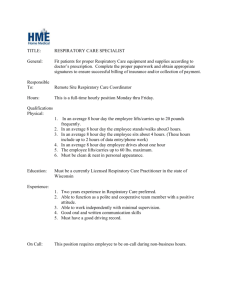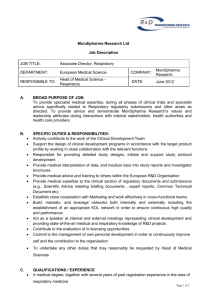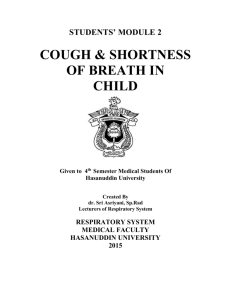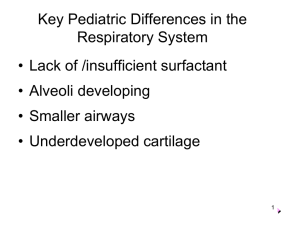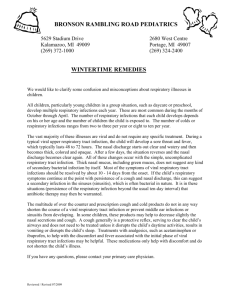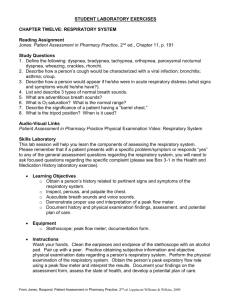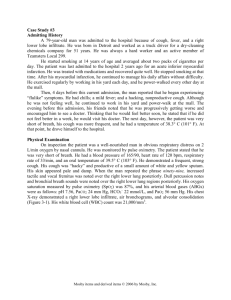Pre-Reading
advertisement
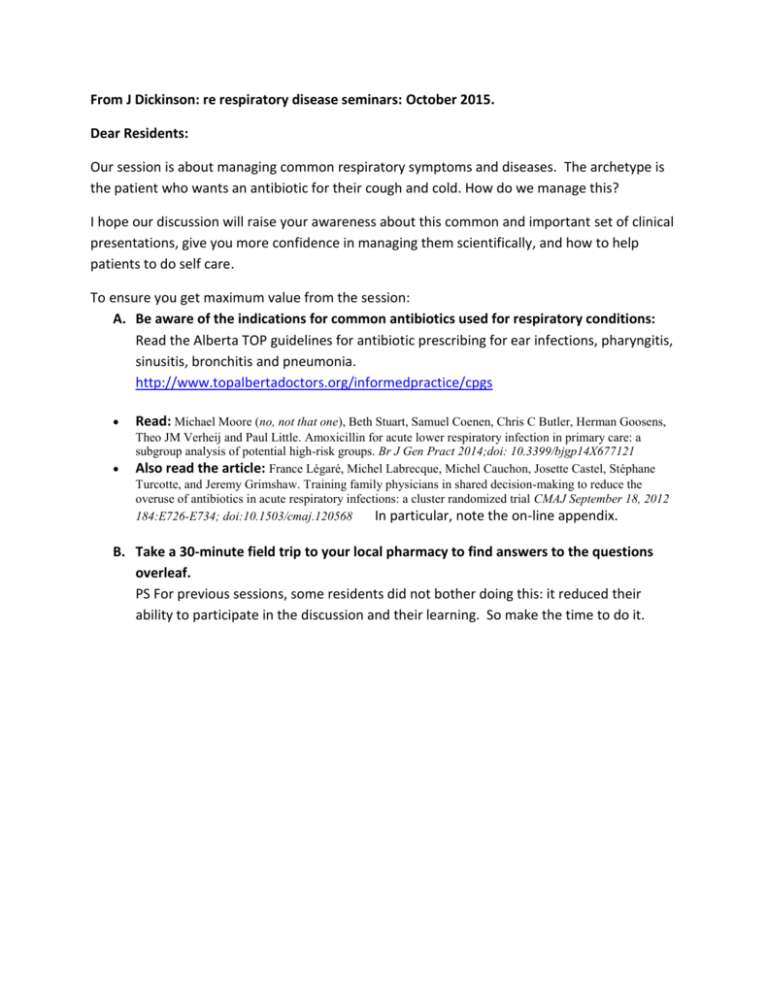
From J Dickinson: re respiratory disease seminars: October 2015. Dear Residents: Our session is about managing common respiratory symptoms and diseases. The archetype is the patient who wants an antibiotic for their cough and cold. How do we manage this? I hope our discussion will raise your awareness about this common and important set of clinical presentations, give you more confidence in managing them scientifically, and how to help patients to do self care. To ensure you get maximum value from the session: A. Be aware of the indications for common antibiotics used for respiratory conditions: Read the Alberta TOP guidelines for antibiotic prescribing for ear infections, pharyngitis, sinusitis, bronchitis and pneumonia. http://www.topalbertadoctors.org/informedpractice/cpgs Read: Michael Moore (no, not that one), Beth Stuart, Samuel Coenen, Chris C Butler, Herman Goosens, Theo JM Verheij and Paul Little. Amoxicillin for acute lower respiratory infection in primary care: a subgroup analysis of potential high-risk groups. Br J Gen Pract 2014;doi: 10.3399/bjgp14X677121 Also read the article: France Légaré, Michel Labrecque, Michel Cauchon, Josette Castel, Stéphane Turcotte, and Jeremy Grimshaw. Training family physicians in shared decision-making to reduce the overuse of antibiotics in acute respiratory infections: a cluster randomized trial CMAJ September 18, 2012 184:E726-E734; doi:10.1503/cmaj.120568 In particular, note the on-line appendix. B. Take a 30-minute field trip to your local pharmacy to find answers to the questions overleaf. PS For previous sessions, some residents did not bother doing this: it reduced their ability to participate in the discussion and their learning. So make the time to do it. Pharmacy Field Trip 1. What is the price difference between antihistamines? Find the per tablet cost of: Claritin vs generic loratadine Aerius, Zyrtec, or another “new” antihistamine Chlorpheniramine (4mg) Another old generation antihistamine: e.g. diphenhydramine 2. If you buy “Sudafed”, in what forms and dosages does it come: a) Off the shelf? b) Behind the counter? What is the difference between them? What does the pharmacist advise for a patient who has hypertension? 3. If someone wants to buy “Tylenol”, what possible variations could they get? Can you find any without acetaminophen? What are the differences between them? 4. If a patient is taking “Tylenol Cold Remedy”, what are they getting? Is it value for their money? How does it compare with other cough and cold remedies? 5. What is the difference between Dayquil and Nyquil? Is that a good remedy to recommend? 6. What would you recommend for someone who has “the flu” with a bad sore throat? 7. What cough remedies can you find? What ones are appropriate for young children? 8. How do “Dristan” and “Claritin” nasal sprays differ? 9. Can you recommend a nasal spray or drops for a baby who a clogged nose and cannot breathe? While you are there, take a look at other areas in the pharmacy to see what other drugs patients can buy for themselves so you can advise them as appropriate.





